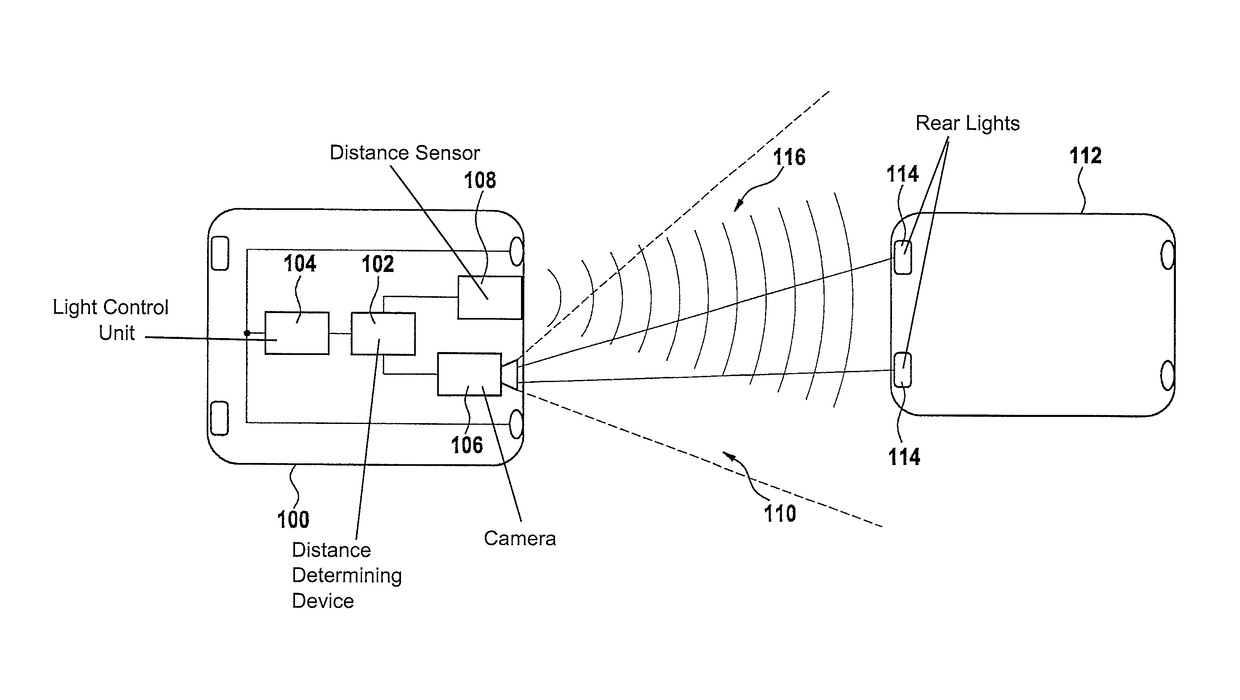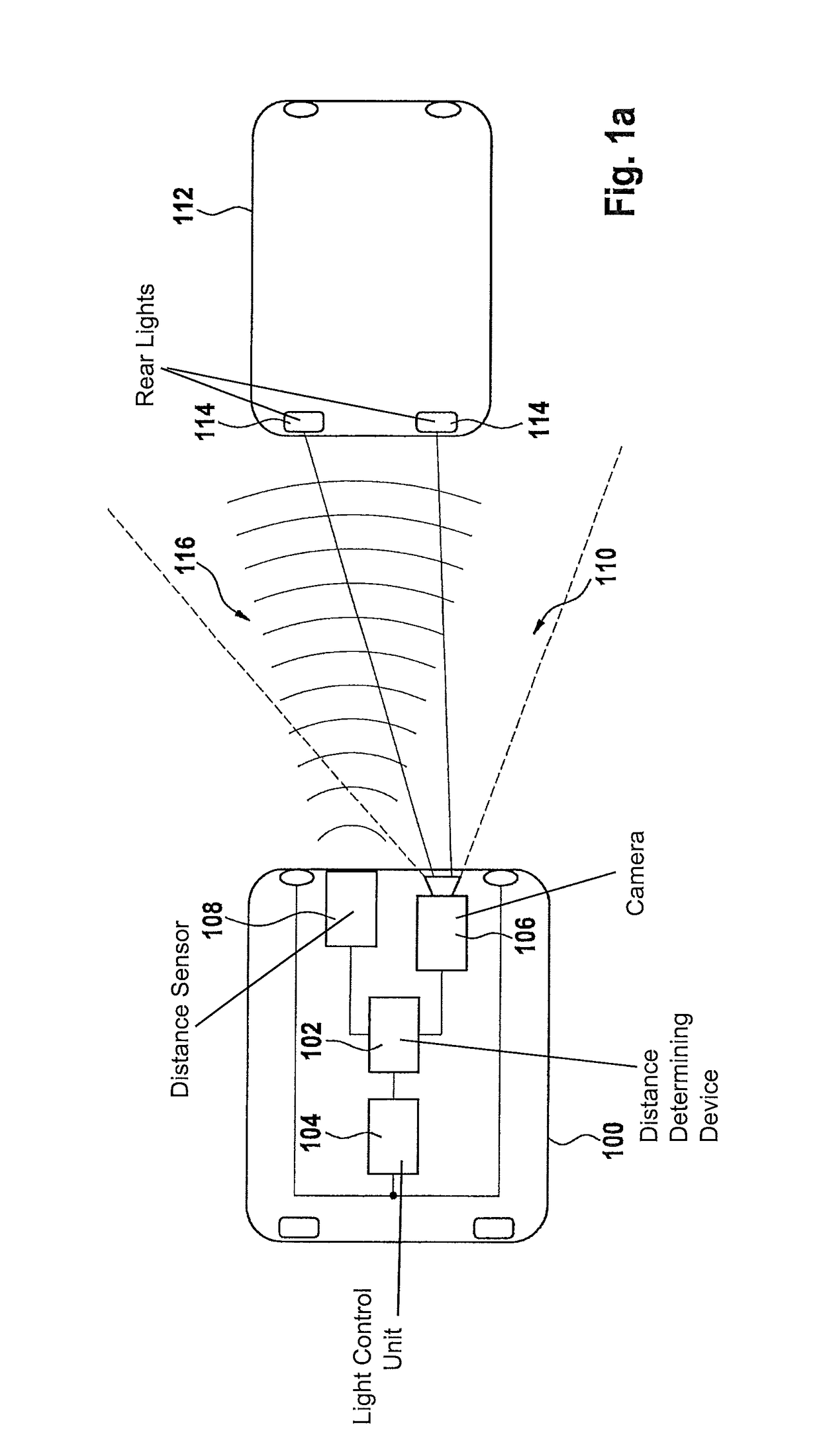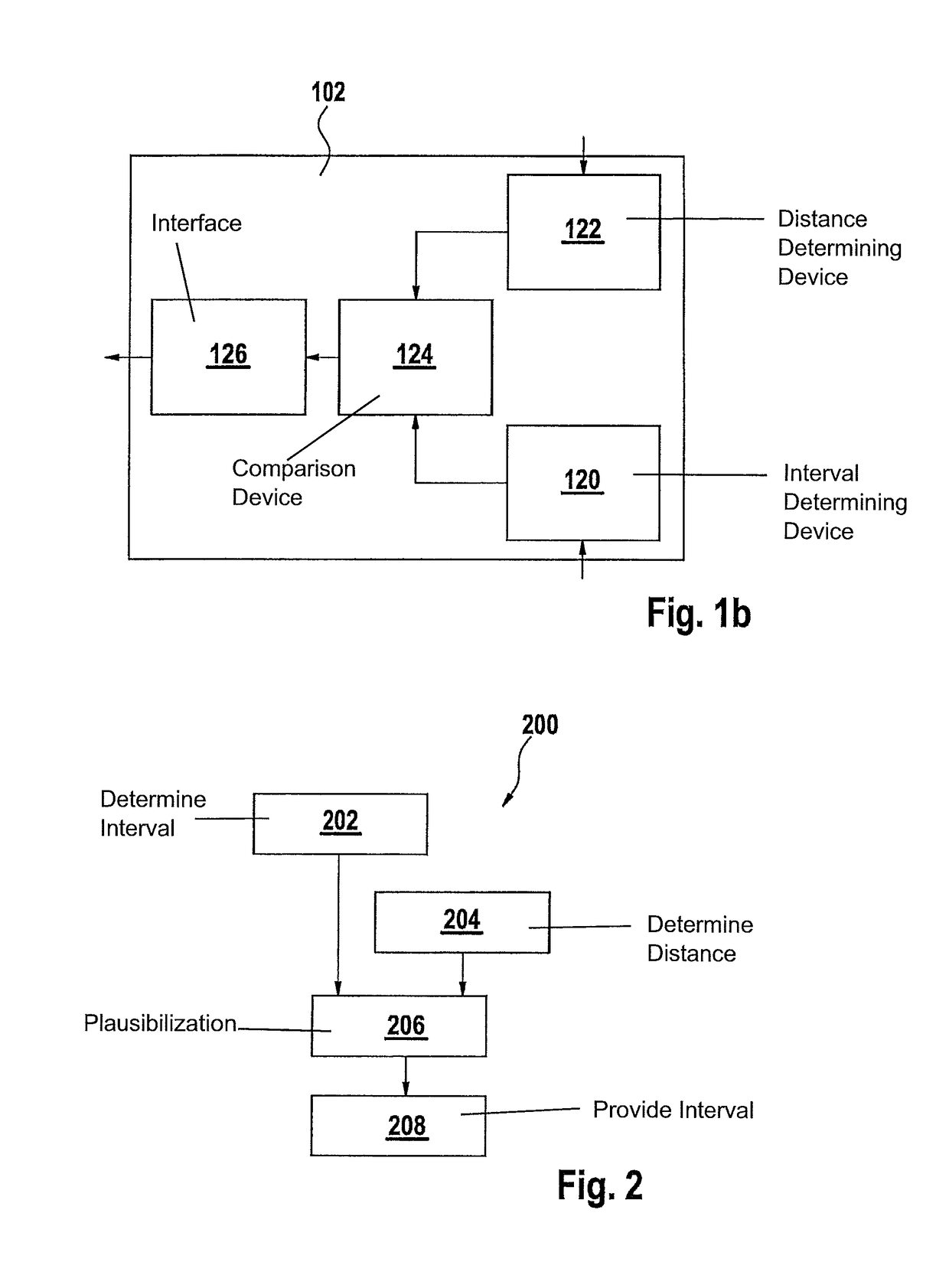Method and device for providing a signal for a light control unit
a technology of light control unit and signal, which is applied in the direction of reradiation, television systems, instruments, etc., can solve the problems of blinding of the front-drive vehicle, other traffic participants may still be blinded, etc., and achieve the effect of reducing the computing expense of interval determination and easy and fast estimation
- Summary
- Abstract
- Description
- Claims
- Application Information
AI Technical Summary
Benefits of technology
Problems solved by technology
Method used
Image
Examples
Embodiment Construction
[0023]In the following description of preferred exemplary embodiments of the present invention, identical or similar reference characters are used for elements shown in the various Figures and having similar functions, so that repeated description of these elements is omitted.
[0024]FIG. 1a shows a representation of a vehicle 100 having a device 102 for providing a signal to a light control unit 104 according to an exemplary embodiment of the present invention. Vehicle 100 has a camera 106 and a camera-independent distance sensor 108. A vehicle in front 112 is situated in an acquisition region 110 of camera 106. Two rear lights 114 of vehicle in front 112 are situated at a distance from one another. From a point of view of camera 106, rear lights 114 of vehicle in front 112 have a measurable angle to one another. In an imaging plane of camera 106, image points representing rear lights 114 have a smaller interval from one another. The larger the reduced interval in the imaging plane o...
PUM
 Login to View More
Login to View More Abstract
Description
Claims
Application Information
 Login to View More
Login to View More - R&D
- Intellectual Property
- Life Sciences
- Materials
- Tech Scout
- Unparalleled Data Quality
- Higher Quality Content
- 60% Fewer Hallucinations
Browse by: Latest US Patents, China's latest patents, Technical Efficacy Thesaurus, Application Domain, Technology Topic, Popular Technical Reports.
© 2025 PatSnap. All rights reserved.Legal|Privacy policy|Modern Slavery Act Transparency Statement|Sitemap|About US| Contact US: help@patsnap.com



